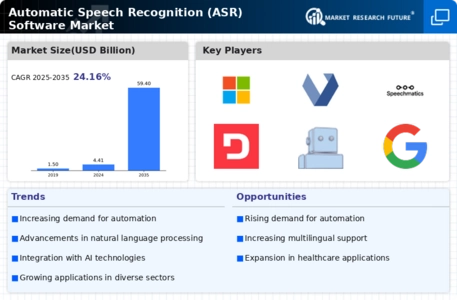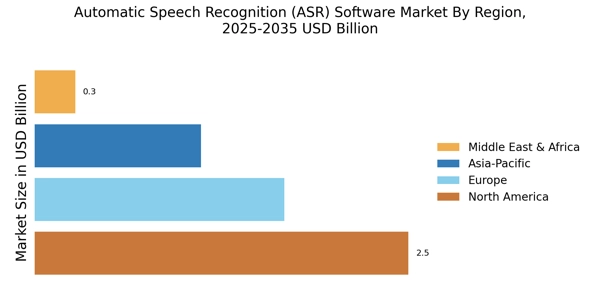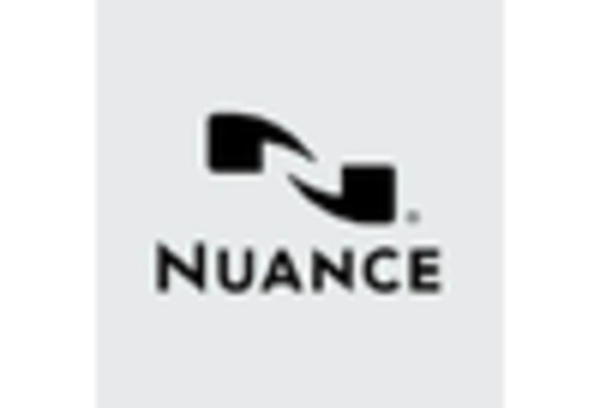Growing Adoption in Healthcare Sector
The healthcare sector's growing adoption of Automatic Speech Recognition (ASR) Software Market is a notable driver for the market. ASR technologies are being utilized for various applications, including medical transcription, patient documentation, and voice-enabled electronic health records. This trend is largely attributed to the need for improved efficiency and accuracy in healthcare documentation processes. Data indicates that the healthcare ASR market is expanding rapidly, with many healthcare providers recognizing the benefits of reducing administrative burdens through voice recognition technologies. As the demand for streamlined healthcare operations continues to rise, the ASR Software Market is likely to experience significant growth.
Increased Focus on Customer Experience
An increased focus on enhancing customer experience is driving the Automatic Speech Recognition (ASR) Software Market. Businesses are increasingly recognizing the importance of providing seamless and efficient customer interactions. ASR technologies facilitate this by enabling voice-activated customer service solutions, which can lead to quicker response times and improved satisfaction rates. Market analysis suggests that companies investing in ASR solutions are likely to see a positive impact on customer retention and loyalty. As organizations strive to differentiate themselves in competitive markets, the adoption of ASR technologies is expected to rise, further propelling market growth.
Advancements in Machine Learning and AI
Technological advancements in machine learning and artificial intelligence are significantly influencing the Automatic Speech Recognition (ASR) Software Market. These innovations enhance the accuracy and efficiency of ASR systems, making them more appealing to businesses across various sectors. The implementation of deep learning algorithms has led to improved speech recognition capabilities, allowing for better understanding of diverse accents and dialects. As organizations increasingly adopt AI-driven solutions, the ASR market is expected to witness substantial growth. Reports suggest that the integration of AI in ASR technologies could lead to a market expansion, with estimates indicating a potential increase in revenue generation over the coming years.
Rising Demand for Voice-Activated Technologies
The increasing prevalence of voice-activated technologies is a primary driver for the Automatic Speech Recognition (ASR) Software Market. As consumers and businesses alike seek more efficient ways to interact with devices, the demand for ASR solutions has surged. According to recent data, the market for voice-activated devices is projected to reach substantial figures, indicating a robust growth trajectory. This trend is further fueled by the integration of ASR in various applications, including virtual assistants, smart home devices, and customer service automation. Consequently, companies are investing heavily in developing advanced ASR technologies to meet this growing demand, thereby propelling the market forward.
Expansion of E-Learning and Remote Work Solutions
The expansion of e-learning platforms and remote work solutions is significantly impacting the Automatic Speech Recognition (ASR) Software Market. With the increasing reliance on digital communication and online education, ASR technologies are being integrated into various applications to facilitate better interaction and engagement. For instance, ASR can enhance virtual classrooms by providing real-time transcription and translation services, making learning more accessible. Market trends indicate that the demand for ASR in educational and professional settings is on the rise, as organizations seek to improve communication and collaboration. This trend is likely to contribute to the overall growth of the ASR market in the coming years.


















Leave a Comment